The Keith lodge of PeterheadNo.56 is the oldest Masonic Lodge in Peterhead & in the province of Aberdeenshire East.
A bit of Lodge History
The Lodge received its charter from The Grand Lodge of Scotland on the 6th February 1754, Although evidence indicates that the lodge may have been founded on the 13th April 1739 and named after the Earl Marischal George Keith. It is also stated that in 1740, George Gray was elected R.W.M when the lodge was first formed.
In the year 1795, A book titled ‘ The Statistical Account of Scotland’ was published by Sir John Sinclair, Bart.
The section detailing the account of Peterhead was written by the Rev. Dr Moir, Minister. It is of interest to note that the Rev. Dr Moir was a member of the Keith Lodge, He was initiated on the 29th July 1762 and we can therefore only assume he an in-depth knowledge of the Lodge History by the time he wrote about Peterhead in 1795; In it he wrote the following:-
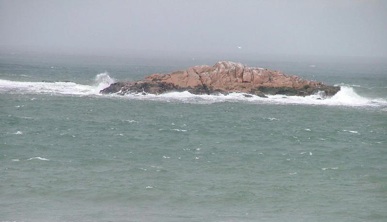
“The other bay is formed on the North and part of the lands of Boddom, the termination of the Stirling Hill on the South; this point is called Boddom-head; but in the charts and by most strangers, is styled the Buchanness.
The distance from Boddom-head to the easternmost point of Keith Inch is about 3 miles; and a line drawn through these two points is considerably to the eastward of Satie’s Head which divides the two bays. The shore on the South side of the parish is rocky & high; at the head of each bay there is a sandy beach. In the Bay near to Boddom-head, there is a small rock about half a mile, or a little more from the land, called Skerra, in maps denominated Craig Hurlie, where people often go to gather dilse, where some sea-fowl resort, and where the free-masons of this town used to sometimes hold their meetings, when members were admitted into their society, and before the present Keith Lodge was erected in the town of Peterhead.”
The above statements were then published in a similar book by local historian Peter Buchan, in his ‘Annals of Peterhead’ of 1819, whilst on an excursion by sea he wrote:- “On leaving the well built harbour of Peterhead, we passed salt-house head, another quarter of an hour brought us to the strait of Craig Forland, so called in the maps, but by the natives of Peterhead & Boddam, ‘Skerry’ which separates a small island from the mainland. Upon this rocky island the Keith Freemasons of Peterhead, prior to the building of their lodge, used to hold their meetings, particularly when members were to be initiated into this honourable order, and introduced to the insignia of the Compass & Square.”
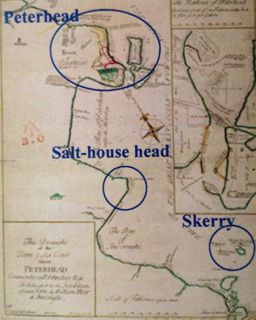
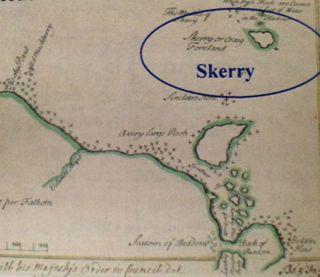
However unlikely it appears to us in present day life, we cannot ignore the facts that both a local minister & local historian both published similar stories of the original meeting place of the Keith Lodge, once in 1795 then again in 1819. As the Rev. Dr Moir was a member of the Keith Lodge of Peterhead; we can only assume this information to be accurate. Whilst in this day & age we would not consider going to the lengths of holding our meeting on a small island half a mile out at sea, but imagine yourself back in the early 1700’s before the Keith Lodge Freemason’s had built their lodge, given Peterhead was a sea faring town, would it be so unreasonable to travel to Skerry Rock for initiating it’s members ?
It certainly appears from recorded history ‘Skerry Rock’ (Pictured), was possibly the first meeting place of The Keith Lodge of Peterhead.

In 1759 from the “Charter by the Preeses of the Governours of the Maiden Hospital” we learn that the Keith Lodge purchased a ‘Feu’ from the Town Superiors and thereon commenced to build a Lodge. On the Earl of Errol’s Plan of a Feu in Peterhead of 1771, (Pictured), The Lodge is shown as a two storey building on road level. The foundations of the Lodge (the seaward wall of which is still standing today) were actually on the rocks of the foreshore a few yards from the ‘High Water’ mark. This building was to be the home of the Keith Lodge for the next 160 years !
In 1761 Robert Garden (Who was Master in 1761/1762) became the first Baron Baile or Provost to be appointed by free election by the ‘Haill feuars and inhabitants’ of Peterhead, his predecessors having been appointed by the Town Superiors – the Merchant Maiden Hospital, “as it had been bruiked and enjoyed by the Earl Marischal before them”
Around 1761, Peterhead was rapidly becoming famous as a “watering place” and distinguished visitors from all over Europe came to partake of the medicinal waters of the Wine Well which was located next to the old Lodge. The Freemasons built a small bath house on the West gable of the Lodge which contained one bath for the exclusive use of Gentlemen. Permission was given by the Freemasons for the daily use of a ground floor room in the Lodge for visitors and “respectable inhabitants who desired to partake of the health giving waters.” In time the water or pump room in the Lodge became the rendezvous of beauty, wit and fashion.
The year 1764 marked the home-coming of George Keith, Tenth & last Earl Marischal of Scotland. “Before he left his native land for ever the old Earl Marischal determined to revisit the place of his birth”. Notice of this had reached Peterhead, and everything in and around the little town wore a gay aspect. Preparations were made for a grand banquet in the Keith Masonic Lodge, previous to which an address of welcome was to be read in Broad Street. When word was brought that the carriage was in sight, the townsfolk formed inline, headed by the Magistrates, and marched out to meet their illustrious visitor.
There is no evidence when or where George Keith became a Freemason, but we know his brother James Keith was Master of a Lodge in either at Moscow or St. Petersburg in 1732 and they both appeared at the Grand Lodge Of England.
For the fourteen remaining years of his life the Earl Marischal spent a happy and contented old age under the wing of King Frederick the Great at Potsdam. He was called the King’s Friend and was the only one who had deserved that title, for he always stood high in his favour without flattering him.
1775 – Prior to this time, the Earl of Errol who was a regular of the Pump Room took a feu immediately opposite the Lodge, at he corner of Jamaica Street and Lodge Walk, and erected ‘an elegant & commodious dwelling’ which he named the ‘New Inn’. Under changing circumstances the Freemasons were faced with the alternative, either of withdrawing all privileges for use of the pump room or of making extensive alterations to the Lodge. Happily they decided to improve and extend. They purchased an additional piece of ground, 20 feet in length and 40 feet in breadth, on the West. The Freemasons demolished the bath house around 1775 and the lodge was extended and reconstructed, The reconstructed building contained two baths and four dressing rooms for the gentlemen below: a ladies bath and three dressing rooms on the lower floor beside the room for drinking the water; the Mason Hall and preparation room on the middle flat at the East; and an elegant drawing room, 36 feet long, 18 feet wide & 14 feet high at the West. At the same time the well was enclosed by a small stone building, with the Keith coat of arms cut in freestone over the doorway.
1793 – The lodge again purchased another piece of ground, measuring 100 feet in length & 40 feet in breadth. They altered and extended their premises in 1795 & 1799 by which time there were two large warm baths, a large room for dancing, and a room for billiards, all erected by the Keith lodge.
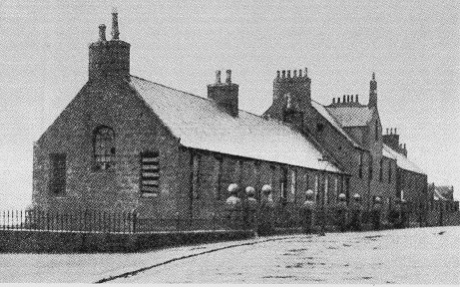

The Mason Lodge, built in 1759 & demolished in 1937.
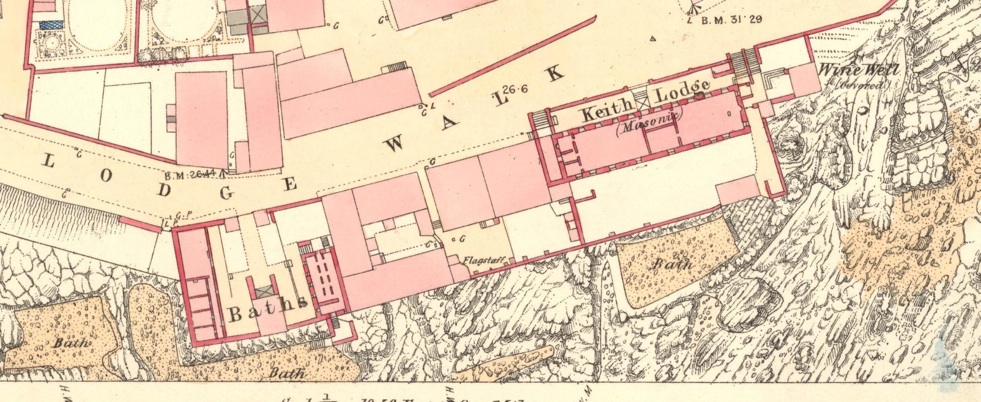
The above ordinance map shows the location of the old Lodge built by the Keith Freemasons of Peterhead along with the baths & the Wine Well.
1804 – On Friday 25th May, 1804, the foundation of the Muckle Kirk was laid with all pomp & ceremony. An eye-witness reported:- “The Mason’s walked in procession, and 120 Volunteers as a guard, who fired three rounds after the ceremony was at an end, and prayer was said by the Rev. Dr. Moir, then the Corn, Wine & Oil was put, or rather poured, on the stone, the music began to play, and they marched away. (This is the same Rev. Dr Moir who wrote the chapter on Peterhead for the book ‘The Statistical Account of Scotland – 1795’)
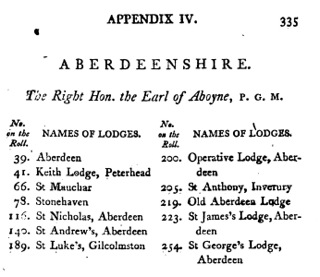
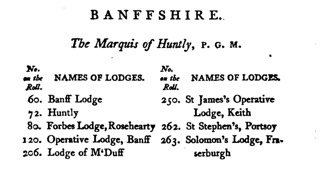
In the Roll of Lodges from 1804, The Keith Lodge was the only Lodge within Peterhead, also worthy of note are Lodge Forbes & Lodge Solomon are detailed under the province of Banffshire, these two lodges are now under the jurisdiction of Aberdeenshire East.
1808 – The Lodge is fortunate in having a copy of “The Constitution, Rules, Orders and Regulations of the Keith Lodge of Peterhead” for this year. It also contains a list of members along with their dates of admission, the earliest date is 1755 – The first record in this book is of a William Milne. It is of interest to note that of the 134 names on the list, 61 are masons, 30 are mariners or sea faring men & 43 other trades or professions.
1814 – At a meeting held on the 29th July 1814 the Keith Lodge received a letter from the petitioners of William Mackie, Alexander Stewart, James Smith & John Walker. The four petitioners were brethren of Lodge St. James No.223 of Aberdeen and they were petitioning to form a new lodge in Peterhead – “The St James Lodge of Peterhead Freemasons” This is where the present Lodge St. James No.256 originated. More on Lodge St. James No.256 can be read here.
1814 – At a meeting held on the 29th September 1814, for the purpose of establishing a fund for the relief of sick and decayed members thereof, their widows and children, the following rules and regulations are ordained, and that it shall be known under the name and designation of the Keith Lodge Royal Arch of Freemasons Peterhead.
This is the first minute of the society which became the Keith Lodge Royal Arch Chapter No. 44. The Royal Arch of Freemasons continued as an independent body until 1820, when they received a Charter from the Supreme Grand Chapter of Scotland.
In 1816 the Keith lodge was placed number 55 on the roll of Lodges, Prior to this time the lodge held the number 412 and shared the number with the now extinct Lodge of Edinburgh from Dunfermline which held the number 411. The latter Lodge received its charter in 1739. At that time many operative lodges throughout Scotland still holding aloof and independence of the Grand Lodge, were granted the privilege of merely paying the fees of a constitution for their Patents of Erection and Constitution. Was Keith Lodge one of those lodges? Was it placed No. 412 on the Roll of Lodges in 1739 under these circumstances?
1822 – In the Grand Lodge enumeration of this year The Keith lodge was Number 52 on the Roll of Lodges.
1826 – In the Grand Lodge enumeration of this year The Keith lodge was Number 56 on the Roll of Lodges, which it still retains today.
1838 – The Foundation stone of Peterhead Academy was laid, According to the programme of Procession the parties were to form into line in Broad Street at Twelve Noon. The Mason Lodges preceded by Bands of Music were well to the front. Behind them an Operative carrying Cup with Oil, Operative carrying cornucopia & Operative carrying Cup with Wine.
1867 – Prior to this year the Keith Lodge had existed as a combine Benefit Society & Masonic Lodge. By order of Grand Lodge this arrangement had to cease and accordingly two separate bodies were formed. The benefit society became known as the Keith Masons’ Society and the Masonic Lodge retained the name of The Keith Lodge of Peterhead No. 56. The society continued to use the old minute books, which unfortunately are now missing. When the Society was wound up in 1893, only four members were left:- William Boyd, Writer in Peterhead; Peter Birnie, Ship Carpenter in Peterhead; Thomas Forrest, Farmer at Clerkhill and John Ingram, one time writer in Peterhead and residing at Gresham Cottage, Pitmuxton, Aberdeen.
Let us now ask ourselves, “Which of these members had possession of the Old Books?” and do they still exist somewhere gathering dust?
Some are of the opinion that it would have been William Boyd, who was a partner in the firm of Boyd and Gray Solicitors in Peterhead, and the predecessor of the present firm of Messrs Gray & Gray.
If anyone can assist us in tracing these books please Contact Us, any help would be highly appreciated.
1871 – In this year the Provincial Grand Lodge of Aberdeenshire East was reconstituted. Brother Captain Charles Hunter of the Royal Aberdeenshire Highlanders, was affiliated to the Keith Lodge and afterwards installed as Provincial Grand Master by Brother Doctor William Beveridge.
It appears from the Lodge minute of that date that the Lodge was having not having any nonsense “The Lodge received deputations from the Forbes Lodge, Rosehearty & Solomon Lodge, Fraserburgh, and the Brethren from these Lodges associated with and placed themselves for the time being under the rule and mallet of the Keith Lodge.
“Thereafter the Lodge was summoned to admit the Provincial Grand Lodge Master and the Deputation from Aberdeen City Provincial Grand Lodge, and the necessary permission being given they were received in due form.
1884 – At the meeting of the Keith Lodge on the 18th February, Brother Chalmers, Master Elect of the Fraser Lodge, Strichen, took the oath and obligation of Master, It would appear that the Fraser Lodge was reopened about this time.
1891 – At a meeting on the 5th January 1891 following a dispute within the Keith Lodge, a document came into circulation which contained a request from a number of Keith Lodge members to consider the resuscitation of the dormant St. James Lodge No. 327. The reconstitution & installation of Lodge St James No. 256 was carried out by the recently installed RWM of the Keith Lodge Brother Hyam Dimmer who also went onto be the RWM of Lodge St James No. 256. You can read a brief history of Lodge St. James here.
1904 – On the 25th January 1904 the Keith Lodge celebrated its 150th Anniversary from its date of charter, A capital supper was partaken by the Brethren, Brother Leask then gave the the toast to the Keith Lodge, and in doing so gave a very interesting account of the history of the Lodge since its institution. He had a list of the Master’s of the Lodge from the beginning upto an early date in the 19th Century, unfortunately from that date down to 1867 the minute books were missing, but since that date were complete. He suggested that an endevour should be made to procure the wanting information from local sources such as Church and Burgh boards & records, and that a History of the Lodge should be made without delay and the meeting cordially agreed to this.
This is still an ongoing task today where we are continually trying to find details of those missing years.
1921 – Prior to 1922 The Keith and St. James Lodges occupied the Old Lodge Buildings in Lodge Walk, the former occupying the downstairs premises and the latter the room above. The premises of neither lodge was very suitable, and the accommodation in view of the growing membership, was extremely limited. The Lodges Vacated their premises in Lodge Walk and took up temporary residence elsewhere until they secured their current premises in Broad street which is owned jointly by The Keith Lodge of Peterhead No. 56 & by the St. James Lodge No. 256.
The Temple today is one of the finest and most commodious Masonic buildings in the North of Scotland. The ground floor consists of the meeting hall measuring 62 Feet by 24 Feet, two large cloakrooms and the preparation room. The First and Second Floor houses the Masonic Social club and the Third Floor now lies unused, but in the past was used as a rifle range for the Peterhead Rifle Club.

1922 – On the 28th August 1922, The Keith Lodge of Peterhead, on the Invitation of the Secretary of the Lifeboat Institution took part in the presentation of the new Lifeboat to the town of Peterhead. It was a gift from the Grand Lodge of England and the handing-over ceremony was performed by His Grace the Duke of Atholl, Past Grand Master Mason of Scotland.
https://youtube.com/watch?v=3qNeAblq9bs%3Frel%3D0
An old video showing the Keith Lodge masons walking in procession for the presentation of the new Peterhead Lifeboat.
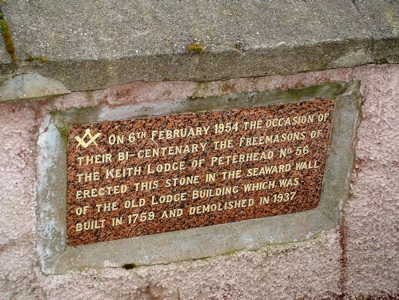
1954 – A Granite plaque was placed in the remaining wall of the Lodge Building and was unveiled by brother the Rt. Hon. Lord Saltoun.
The Plaque bore the inscription:-
” On 6th February, 1954, The occasion of their Bi-Centenary, The Freemasons of The Keith Lodge of Peterhead, No. 56, Erected this stone in the seaward wall of the old Lodge building which was built in 1759 and demolished in 1937″
